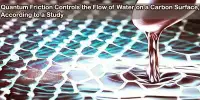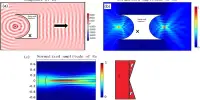A Halbach array is a special arrangement of permanent magnets that augments the magnetic field on one side of the array while canceling the field to near zero on the other. It is a type of permanent magnet arrangement that creates a strong and focused magnetic field on one side while minimizing the field on the other. This is accomplished by employing a spatially rotating magnetisation pattern. Klaus Halbach proposed it in the 1980s, and it has found numerous applications in engineering and science.
A Halbach array is distinguished by its ability to generate a nearly uniform magnetic field on one side while significantly reducing field strength on the other. This is accomplished by arranging the magnets in a particular pattern. Magnets are typically oriented so that their north and south poles alternate along the array, resulting in a magnetic field that varies spatially.
The rotating pattern of permanent magnets (on the front face; on the left, up, right, down) can be repeated indefinitely and have the same effect. This arrangement has the effect of many horseshoe magnets placed next to each other with similar poles touching. In 1970, Magnepan’s James (Jim) M. Winey invented the principle for the ideal case of continuously rotating magnetization caused by a one-sided stripe-shaped coil.
The resulting magnetic field is highly concentrated on one side of the array, known as the “working side,” while canceling out or significantly reducing the field on the opposite side, known as the “dead side.” This property makes Halbach arrays useful in a variety of applications that require strong, localized magnetic fields while minimizing interference from the surrounding environment.
Some common applications of Halbach arrays include:
- Magnetic resonance imaging (MRI): These are used to create powerful, uniform magnetic fields for medical imaging. The array produces a focused field, which improves image quality and resolution.
- Magnetic levitation (maglev) systems: These are used in maglev trains and other magnetic levitation-based transportation systems. The arrays generate a powerful magnetic field that lifts and propels the vehicles, reducing friction and allowing for high-speed travel.
- Electric motors and generators: These can be used to improve the efficiency and power output of electric motors and generators. The array’s focused magnetic field improves the performance of these devices.
- Magnetic separators: Magnetic separation processes use these to selectively attract and separate magnetic particles from a mixture. The concentration of the magnetic field improves separation efficiency.
















